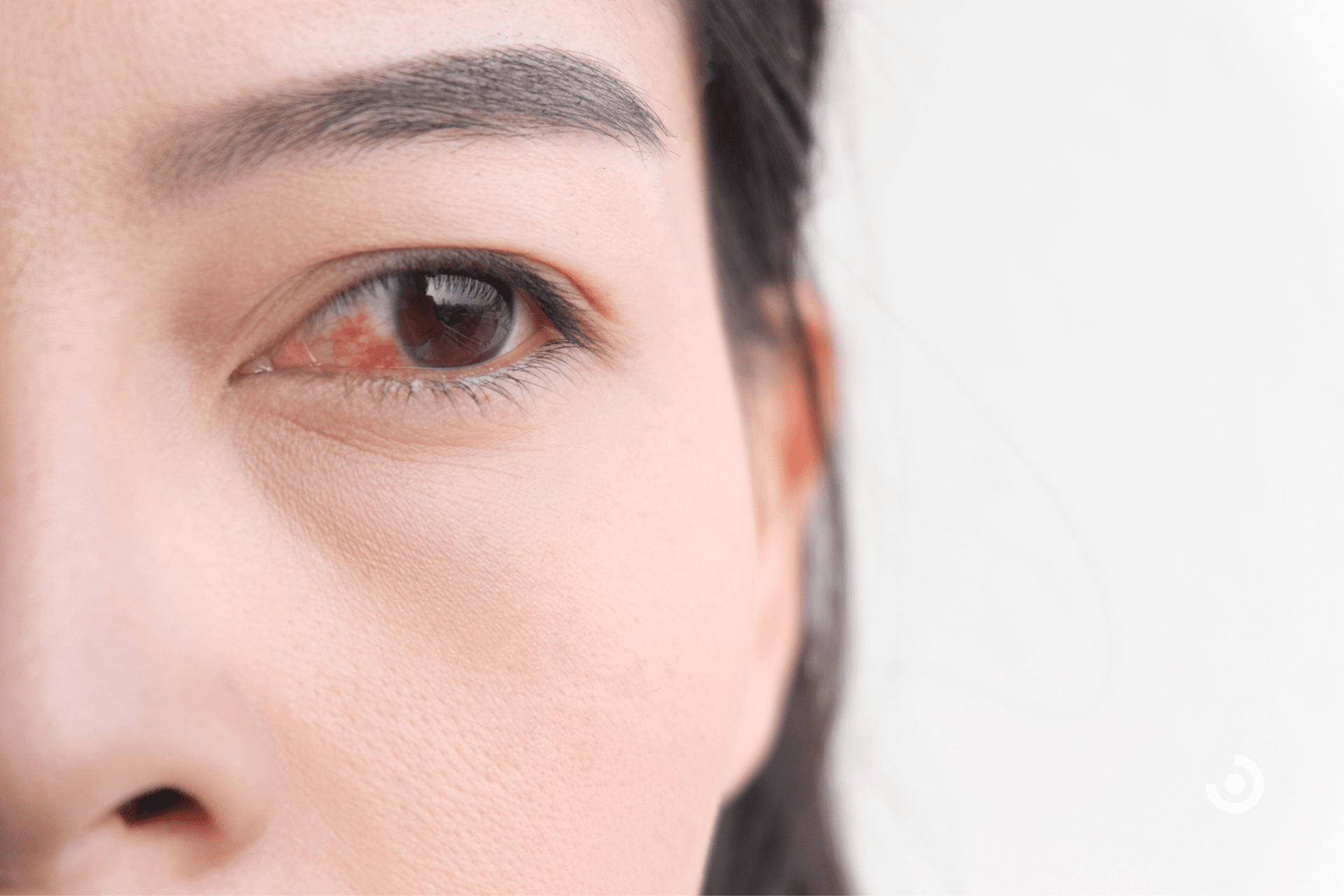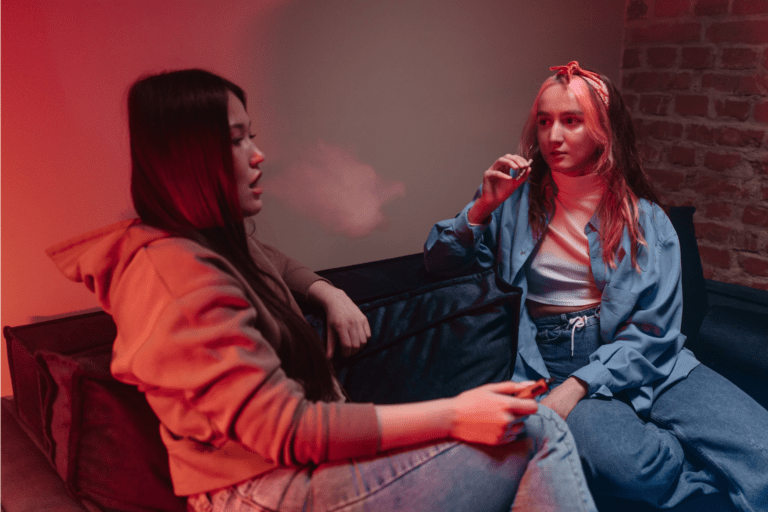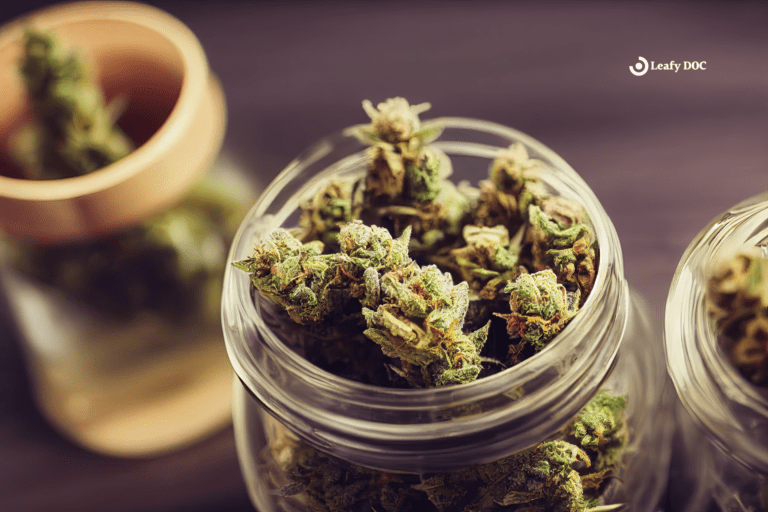Why Does Weed Make Your Eyes Red?
by Haley Mills · December 9, 2022
Weed is known to cause bloodshot eyes, but why? This article dives into the science behind why weed makes your eyes red.

Weed is known to cause bloodshot eyes, but why? This article dives into the science behind why weed makes your eyes red.
For newer cannabis users, the onset of red, bloodshot eyes could cause mild panic, leaving you to wonder if smoking weed can cause permanent damage to the eyes or blood vessels. Luckily, as experienced marijuana users already know, there are no severe health risks associated with the sudden onset of red eyes. In fact, it’s an entirely natural occurrence that has nothing to do with the act of smoking at all. Read below to find out more about marijuana and the phenomena of “high eyes.”
Marijuana and It’s Many Names
Marijuana comes from the Cannabis Sativa plant and typically consists of the dried flowers that people ingest through various consumption methods to feel therapeutic physical and mental effects.
Other popular slang names for marijuana include:
- Bud
- Dope
- Herb
- Grass
- Ganja
- Hash
- Mary Jane
- Pot
- Reefer
- Weed
The main psychoactive chemical or cannabinoid in marijuana is delta-9-tetrahydrocannabinol, often referred to as THC. THC is responsible for the psychoactive effects that many recreational users seek from marijuana. THC is found in resin created by cannabis leaves and buds, primarily derived from the female cannabis plant. The cannabis plant has over 500 other chemical compounds, including CBD, CBN, delta-8, and more.
How do People Use Marijuana?
There are multiple ways to use marijuana; however, smoking is currently the most mainstream way to consume it.
The top four ways to smoke cannabis include:
- Joints
- Pipes
- Bongs
- Blunts
People can also brew marijuana tea or make homemade edibles and cannabutter. When cannabis is sold for medical purposes, it is often mixed with foods like brownies, cookies, gummies, and hard candies called edibles.
Vapes are also a standard method for smoking marijuana without the harmful effects of dried plant combustion. There are concentrated resins containing high quantities of cannabinoids, including hash oil, shatter, and wax.
Signs you are High on THC
After consuming marijuana, users may experience the following side effects and symptoms, especially with a high-THC strain:
- Red, bloodshot eyes
- Dizziness
- Dry Mouth
- Giggly and Laughing
- Fatigue
- Forgetfulness (short-term)
- Increased appetite (munchies)
- Slower concept of time
When you are high on THC, minutes may feel like hours as time seems to slow down. Ordinary sights, sounds, and tastes may seem attractive, funny, or different, and you could experience bouts of hunger, especially junk food.
Why does weed give you red eyes?
The red eye effects of marijuana are directly linked to the amount of THC consumed. THC temporarily causes higher blood pressure, heart rate, and the expansion of ocular capillaries. As users build a tolerance to THC, there can be a significant decrease in eye redness.
Cannabis users who prefer strains high in CBD, CBG, or CBN will experience significantly less eye redness and far less psychoactive effects. Some other cannabinoids can can decrease blood pressure, which can decrease the cardiovascular reaction and offset the reddening effects of full-strength THC marijuana.
Edibles, similar to any cannabis product that contains THC, can also cause red eyes through vasodilation. It is widely assumed that the redness is caused by smoking cannabis, but that is untrue. The eye-reddening effect of cannabis edibles depends on the amount of THC, so the higher the levels, the redder the eyes. If your edibles contain predominantly CBD and only trace amounts of THC, you likely won’t see the redness form in your eyes.
Since edibles are processed through the liver and not the bloodstream like when someone smokes marijuana, it takes a while to feel the onset; thus, a bloodshot eye can be similarly delayed. There is a similar principle when using vaporizers, dabs, tinctures, topicals, and other THC-infused cannabis products. If the product contains moderate to high levels of the cannabinoid, your eyes will likely turn pink or red.
THC’s effects on Blood Pressure
A person’s blood pressure directly affects if they will experience red eyes after using THC. For example, those with naturally high blood pressure need to ingest increased levels of THC to lower their blood pressure enough to cause bloodshot eyes. However, people with marijuana or smoking allergies can experience red eyes as a secondary symptom regardless of THC concentrations.
After consuming a cannabis-infused product, users typically experience increased blood pressure and heart rate due to the cannabinoids. These rises are similar to normal, moderate physical activities like exercise or sex. It generally takes up to ten minutes for heart rates to return to normal and blood pressure to decrease. Blood vessels, veins, and ocular capillaries dilate as the blood pressure begins to drop. The dilation of ocular blood vessels and capillaries causes increased blood flow to the eyes, which causes the eyes to turn red and reduces intraocular stress.
This release can be beneficial in relieving eye pressure that can result in nerve damage and vision loss for glaucoma patients. Scientific evidence that THC can lower intraocular pressure (IOP) is a primary reason why many glaucoma patients have attempted medical marijuana use to treat symptoms.
How long will my eyes stay red?
You may have to wait anywhere from 2 to 12 hours, depending on various factors, including the consumption method and the levels of THC consumed. When marijuana is smoked or vaped, THC is immediately absorbed into the bloodstream. The effects are felt within five minutes, peak within thirty minutes, and decrease within one to three hours.
Edible THC has a much slower onset and more prolonged lasting effects. They can take effect within ninety minutes, reach maximum effect after two to three hours, and last from four to twelve hours. Individual factors, including your THC tolerance, body weight, and metabolism, also impact the drug’s intensity, onset time, and lasting effects from recently consumed cannabis.
How can you fix “high eyes”?
Red eyes (high eyes) are a mild and harmless side effect of using THC-infused marijuana. However, they can be annoying, especially for those who need to use medicinal marijuana throughout their daily lives.
Over-the-counter eye drops that treat allergies, redness, and itching are the most effective way to quickly reverse the eye reddening. Eye drops contain tetryzoline, an alpha-agonist that constricts blood vessels and reverses the dilation caused by THC. This, in turn, reduces blood flow to the eyes and the onset of eye redness.
Caffeine stimulants such as a cup of coffee or some dark chocolate can work to reverse the dilation and reduce blood flow to the eyes.
A splash of cold water or an ice pack to the face can help reduce redness by forcing the body to send quickly blood toward the core to protect vital organs as part of an instinct.
The redness will eventually subside naturally. Therefore, if you have the time you can be patient and wait for the THC to do its thing in your body.
How to Prevent Red Eyes
Since THC is the primary cannabinoid responsible for the onset of red eyes, opting for a lower THC strain or using CBD instead will minimize the adverse side effect. It’s essential to note that if you are looking for psychoactive effects, you will not get that experience from low THC or CBD products.
The way to ensure red-eye prevention in public is by planning ahead of time and dosing correctly. If you need to use medical marijuana before work or a meaningful engagement, plan to allow your body and eyes time to recover from the increased blood flow.
Wrapping it Up
The onset of red eyes after using medical marijuana depends on a few factors including the amount of THC, cannabis tolerance and metabolism. While there are no severe issues related to having stoned eyes, it can make it more difficult to use cannabis during the week, especially while driving, working, or socializing.
It is possible to offset the redness by balancing out THC with other cannabinoids such as CBD, but the best thing to do is keep eye drops and try not to use high-THC strains before important daily tasks. With this issue, planning is the key to discretion and experiencing the desired effects of your cannabis products.
Last Updated: August 8, 2024
Get Approved for Your Medical Marijuana Card in Minutes!

Get Your Medical Card
Connect with a licensed physician online in minutes

Like This Article?
Share with your friends
Table of Contents
Keep Reading
-
Medical Marijuana for Women’s Health: Menstrual Cramps, Endometriosis, and More
Learn about the benefits of medical marijuana for women’s health, including menstrual cramps and endometriosis. Discover how cannabis can be used to alleviate symptoms and improve quality of life.
-
Understanding Cannabis Strain Genetics: Indica vs. Sativa vs. Hybrid
Explore the differences between indica, sativa, and hybrid cannabis strains and how they can be used for treatment. Learn about the unique properties of each strain and their effects on the body.
-
Delicious Cannabis Edibles Recipes To Try
Discover a delectable collection of cannabis edibles recipes that will tantalize your taste buds and elevate your experience. From savory dishes to sweet treats, explore these must-try recipes today!



